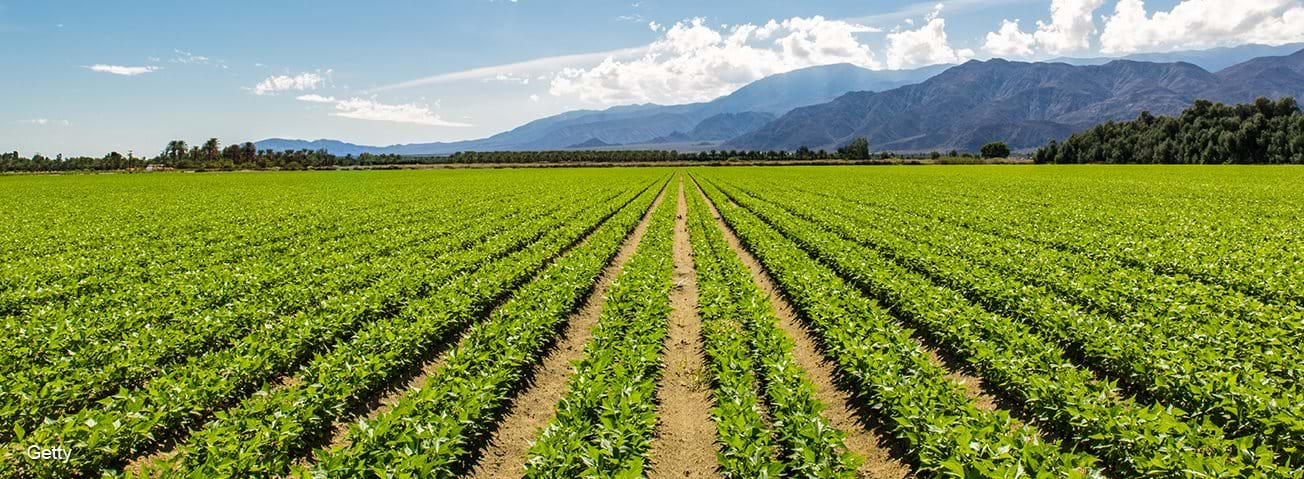Common Organic Practices Include Complex Rotations, Cover Crops, and Pasture

Organic production uses cultural, biological, and mechanical practices that support cycling of on-farm resources, promote ecological balance, and conserve biodiversity. USDA requires organic producers to avoid using synthetic chemicals, antibiotics, and hormones in crop and livestock production—and rely instead on biological pest management, cover crops, and other ecologically based practices. Farmers who shift to organic farming systems from more chemical-intensive systems must make changes across the spectrum of their production inputs and practices.
USDA’s Economic Research Service (ERS) studies, based on data from USDA organic surveys, have found that many of the practices associated with improved soil health were more widely used in organic farming systems than in conventional systems. For example, organic soybean producers often rotated row crops with small grain and meadow crops—and included an idle year in the rotation—while conventional producers mainly used a rotation of continuous row crops. In addition, almost all conventional soybean producers used chemical pesticides for pest and weed control, while organic producers relied on a suite of nonchemical practices. ERS research showed similar patterns for the other field crops.
Other practices that contribute to soil health, soil productivity, and nutrient cycling are also more widely used in organic farming systems. Data from USDA’s most recent USDA Census of Agriculture survey of organic producers show that nearly 40 percent of all organic field crop and specialty crop producers used cover crops in 2014, much higher than among conventional producers. According to ERS studies published in 2011 and 2014, more than half of organic apple producers and over 20 percent of organic corn producers used compost, compared with under 3 percent of conventional apple and corn producers. Animal manure was also much more widely used in organic field crop production than conventional production.
Rotational grazing—managing where and when livestock graze to prevent overgrazing and to optimize pasture growth—is a soil health strategy that was also used more frequently in the organic dairy sector. USDA organic regulations require that all organic dairy cows and other ruminant livestock obtain at least 30 percent of their dry matter intake (forage) from pasture during the grazing season. By comparison, many conventional dairy operations do not use any pasture forage as part of their feeding mix. According to the most recent Census data, 65 percent of organic livestock producers used rotational grazing in 2014, compared with 22 percent of conventional livestock producers in 2012.
Agricultural Resources and Environmental Indicators, 2019, by Daniel Hellerstein, Dennis Vilorio, Marc Ribaudo, Marcel Aillery, Daniel Bigelow, Maria Bowman, Christopher Burns, Roger Claassen, Andrew Crane-Droesch, Jacob Fooks, Catherine Greene, LeRoy Hansen, Paul Heisey, Claudia Hitaj, Robert A. Hoppe, Nigel Key, Lori Lynch, Scott Malcolm, William D. McBride, Roberto Mosheim, Richard Nehring, Glenn Schaible, David Schimmelpfennig, David Smith, Stacy Sneeringer, Tara Wade, Steven Wallander, Sun Ling Wang, and Seth J. Wechsler, ERS, May 2019
Organic Agriculture, by Sharon Raszap Skorbiansky, USDA, Economic Research Service, September 2024
Growing Organic Demand Provides High-Value Opportunities for Many Types of Producers, by Catherine Greene, Gustavo Ferreira, Andrea Carlson, Bryce Cooke, and Claudia Hitaj, USDA, Economic Research Service, February 2017


